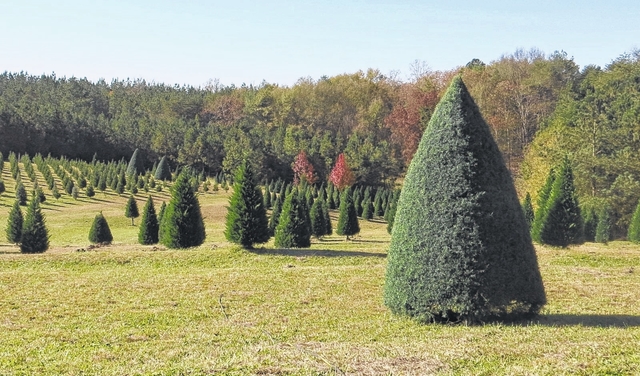CENTRAL — Though wicked weather wreaked havoc on South Carolina agriculture in 2015, the Christmas tree industry was one of the few to ride out the storms relatively unscathed.
“The trees look very good,” said Clemson University Senior Extension agent Mark Arena during a recent visit to a Christmas tree farm near Clemson University. “Their colors are vibrant, they are standing upright and everything I see about Christmas trees this year looks positive.”
Arena, who is Extension’s state expert on Christmas and pecan trees, encourages people to purchase Christmas trees at local farms. In addition to being a fun and festive experience, it benefits South Carolina’s economy by boosting in-state businesses.
“The Christmas tree industry has been growing about 2 to 3 percent every year since 2009,” Arena said. “Going to a local farm and buying a tree is one of the best parts of the holidays. And it’s also not a bad thing for the environment. For every Christmas tree that is cut down, another tree is planted. So we’re actually recycling them.”
In terms of caring for a tree once it has been purchased, Arena said that keeping the Christmas tree stand constantly filled with water is pretty much all that has to be done.
“When you bring home a Christmas tree, the most important thing is to get it in the stand and make sure that it never runs out of water,” Arena said. “Keep in mind that the tree will use a lot more water in the beginning than in the end, when the resins in the tree will start to seal up the base. Also, there’s really no reason to put any additives in the water. The tree will be fine, because it’s only a five- to six-week period, at most.”
Stephen Steed, owner of Merry Christmas Tree Farm in Central, said the summer drought cost him a few white pines. Otherwise, the spring rains increased his tree-planting survival rate, while the summer and fall conditions did little damage to any of his trees, young or old.
“The trees didn’t suffer,” Steed said. Then he chuckled. “But I have to admit that the weather wore on me. During one stretch in early October, I couldn’t get out in the field for 10 days.”
Steed’s farm sells Leyland cypress, Murray cypress, Carolina Sapphires, Blue Ice cypress, Virginia pine and Eastern red cedars.
Fraser firs, which have become the most popular Christmas tree because of their dark-blue color, pleasant scent and needle retention, are not grown in most parts of South Carolina due to the summer heat. Instead, they are grown in the cooler climes of the southern Appalachians and then shipped to South Carolina and other Southern states.
“But the trees that are locally grown are just as beautiful to me,” said Arena, who grew up on a Christmas tree farm. “And I’d take a fresh-cut tree any day over one cut down a week or more ago.”
The South Carolina Christmas Tree Association helps potential buyers find farms nearest to where they live, while also providing details on varieties and care.



